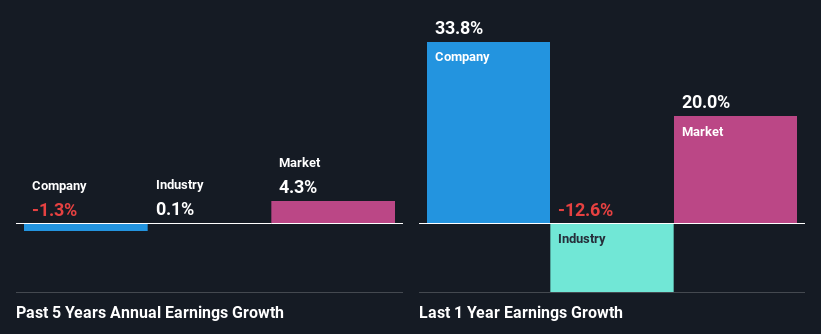Can Mixed Financials Have A Negative Impact on Trustpower Limited's 's (NZSE:TPW) Current Price Momentum?
Most readers would already know that Trustpower's (NZSE:TPW) stock increased by 1.7% over the past week. Given that the stock prices usually follow long-term business performance, we wonder if the company's mixed financials could have any adverse effect on its current price price movement Particularly, we will be paying attention to Trustpower's ROE today.
Return on equity or ROE is an important factor to be considered by a shareholder because it tells them how effectively their capital is being reinvested. Simply put, it is used to assess the profitability of a company in relation to its equity capital.
Check out our latest analysis for Trustpower
How Is ROE Calculated?
Return on equity can be calculated by using the formula:
Return on Equity = Net Profit (from continuing operations) ÷ Shareholders' Equity
So, based on the above formula, the ROE for Trustpower is:
11% = NZ$115m ÷ NZ$1.1b (Based on the trailing twelve months to September 2021).
The 'return' is the income the business earned over the last year. So, this means that for every NZ$1 of its shareholder's investments, the company generates a profit of NZ$0.11.
Why Is ROE Important For Earnings Growth?
So far, we've learned that ROE is a measure of a company's profitability. Depending on how much of these profits the company reinvests or "retains", and how effectively it does so, we are then able to assess a company’s earnings growth potential. Assuming all else is equal, companies that have both a higher return on equity and higher profit retention are usually the ones that have a higher growth rate when compared to companies that don't have the same features.
Trustpower's Earnings Growth And 11% ROE
At first glance, Trustpower seems to have a decent ROE. Especially when compared to the industry average of 5.4% the company's ROE looks pretty impressive. However, we are curious as to how the high returns still resulted in flat growth for Trustpower in the past five years. Based on this, we feel that there might be other reasons which haven't been discussed so far in this article that could be hampering the company's growth. Such as, the company pays out a huge portion of its earnings as dividends, or is faced with competitive pressures.
Next, on comparing with the industry net income growth, we found that the industry grew its earnings by2.2% in the same period.
Earnings growth is an important metric to consider when valuing a stock. What investors need to determine next is if the expected earnings growth, or the lack of it, is already built into the share price. By doing so, they will have an idea if the stock is headed into clear blue waters or if swampy waters await. Has the market priced in the future outlook for TPW? You can find out in our latest intrinsic value infographic research report.
Is Trustpower Using Its Retained Earnings Effectively?
Trustpower's very high three-year median payout ratio of 119% suggests that the company is paying its shareholders more than what it is earning. The absence of growth in Trustpower's earnings therefore, doesn't come as a surprise. Paying a dividend beyond their means is usually not viable over the long term. This is indicative of risk. Our risks dashboard should have the 3 risks we have identified for Trustpower.
Moreover, Trustpower has been paying dividends for five years, which is a considerable amount of time, suggesting that management must have perceived that the shareholders prefer dividends over earnings growth. Existing analyst estimates suggest that the company's future payout ratio is expected to drop to 94% over the next three years. However, the company's ROE is not expected to change by much despite the lower expected payout ratio.
Conclusion
In total, we're a bit ambivalent about Trustpower's performance. While the company does have a high rate of return, its low earnings retention is probably what's hampering its earnings growth. Additionally, the latest industry analyst forecasts show that analysts expect the company's earnings to continue to shrink in the future. Are these analysts expectations based on the broad expectations for the industry, or on the company's fundamentals? Click here to be taken to our analyst's forecasts page for the company.
Have feedback on this article? Concerned about the content? Get in touch with us directly. Alternatively, email editorial-team (at) simplywallst.com.
This article by Simply Wall St is general in nature. We provide commentary based on historical data and analyst forecasts only using an unbiased methodology and our articles are not intended to be financial advice. It does not constitute a recommendation to buy or sell any stock, and does not take account of your objectives, or your financial situation. We aim to bring you long-term focused analysis driven by fundamental data. Note that our analysis may not factor in the latest price-sensitive company announcements or qualitative material. Simply Wall St has no position in any stocks mentioned.

 Yahoo Finance
Yahoo Finance 
